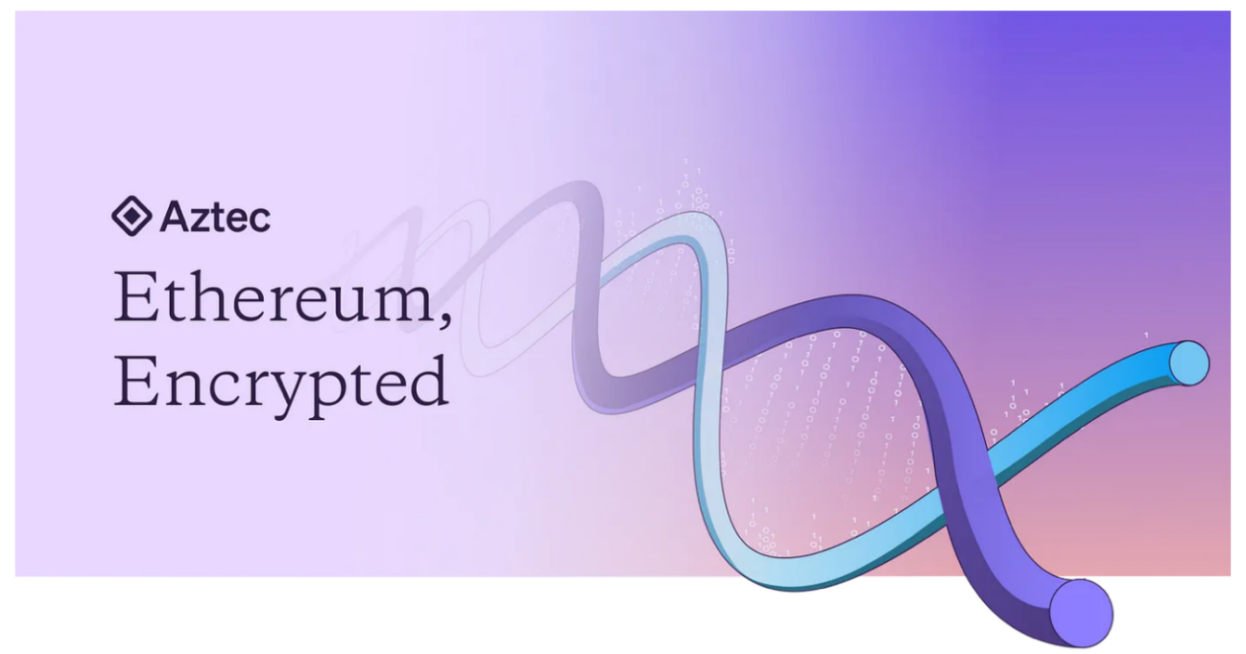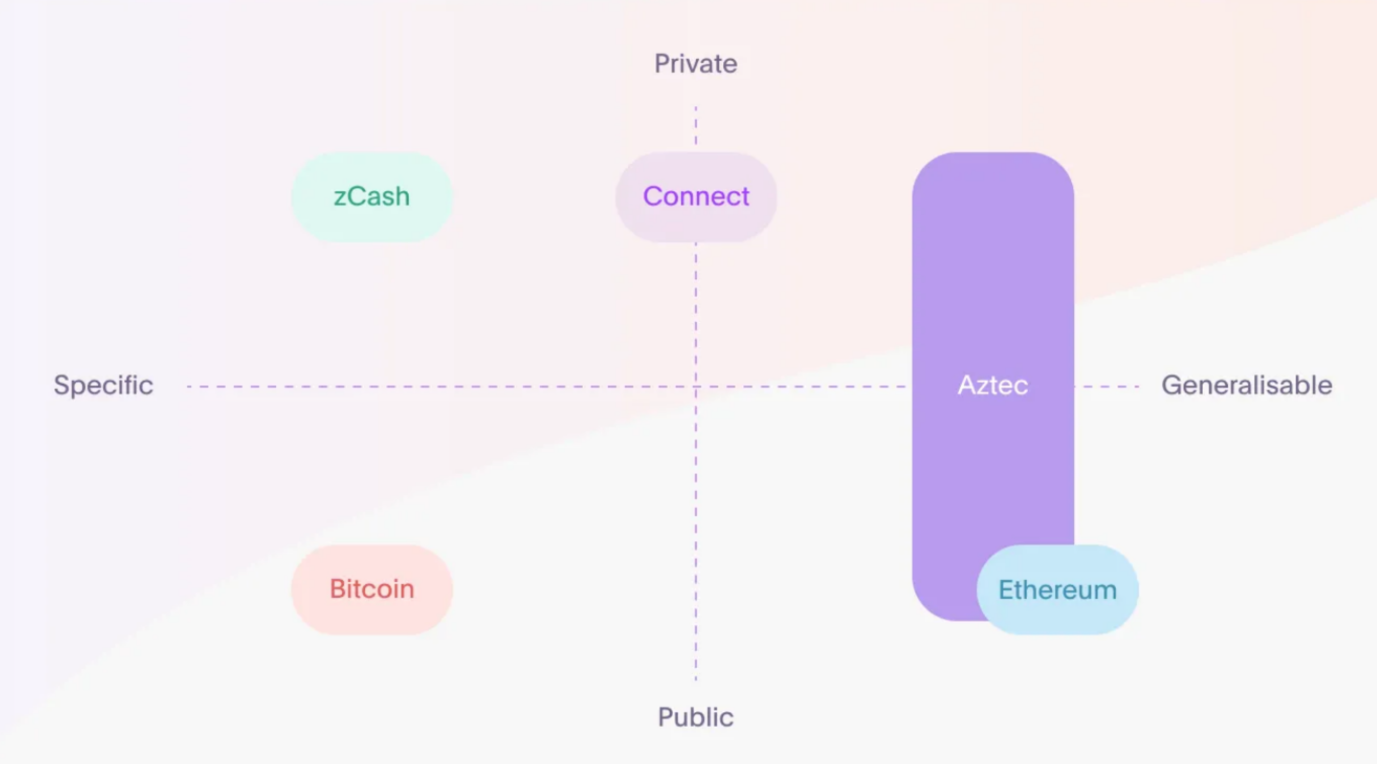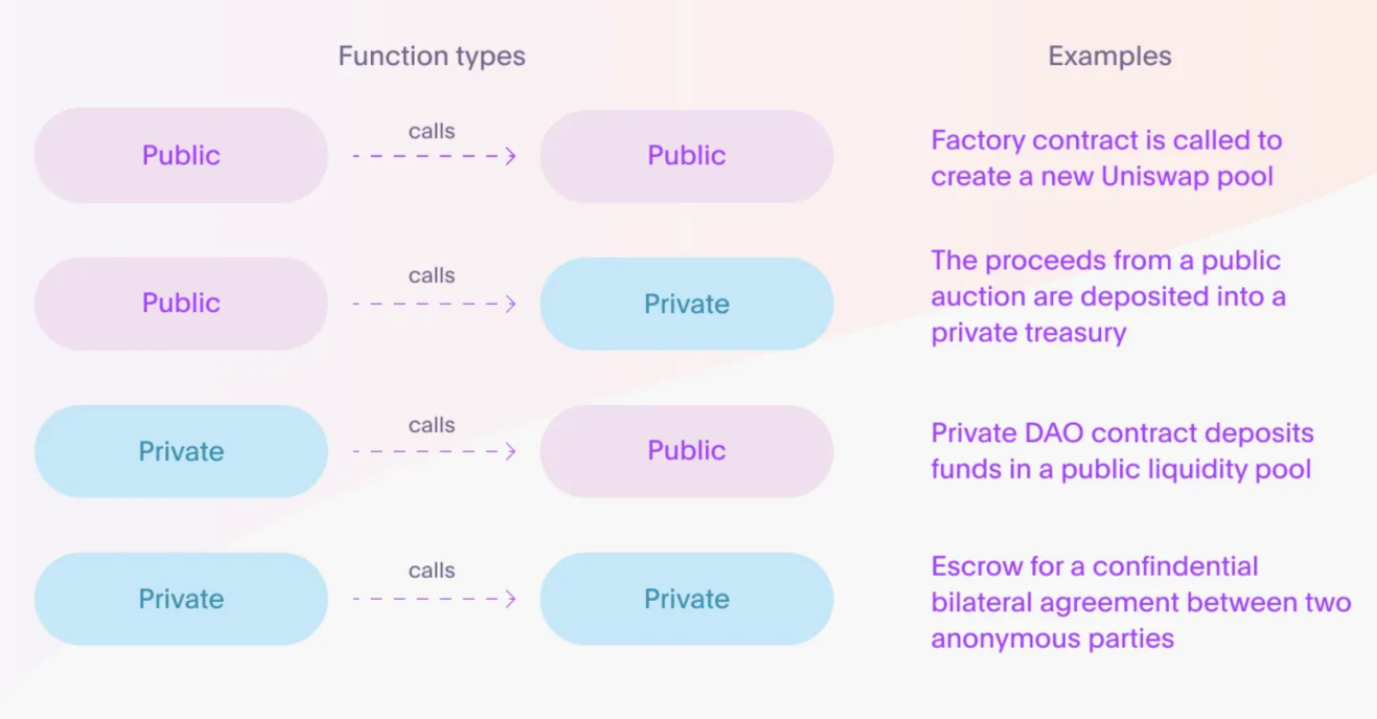Original source: Aztec
first level title
Hybrid zkRollup
The data on Ethereum is public, but many data and transactions have privacy requirements, based on thisAztecIntroduced a transparent + privacy hybrid zkRollup. Everyone is familiar with the concept of a hybrid vehicle, which combines oil and electricity to drive a car. After Aztec announced the discontinuation of Aztec Connect, it recently introduced the hybrid zkRollup concept. What Aztec will do in the future is to combine Ethereum smart contracts with zk encryption execution. If the previous Aztec Connect was only for private transactions of digital assets, the future The application scope of Aztec zkRollup will be wider, involving the privacy calculation and transmission of all data.

first level title
Aztec Technology Roadmap

first level title
Aztec: not a zkEVM
Ethereum is essentially a state machine. It takes a starting state, orders transactions by block, and transitions the state in a deterministic manner. Aztec extends the global state machine to private states. This hybrid public-private state machine handles both public and private execution of smart contract logic. At the same time, it no longer executes transactions like a traditional blockchain, but proves the correctness of already calculated transactions. In other words, Aztec is a zero-knowledge execution environment, but it is not zkEVM.
Why not zkEVM? Isn't zkEVM the ultimate goal?
first level title
Here's why Aztec wants to do both
Aztec combines public and private execution into a single zkRollup, providing seamless composability across encrypted and non-encrypted transactions. If the innovation of Ethereum is to allow reading and writing to public state, then the innovation of Aztec is to be able to read and write to public and private state. Combining public and private into a single hybrid Rollup enables confidentiality and auditability use cases such as:
Private Voting for Public DAOs
Private Sessions for Public Games
Private transactions on public AMMs
Aztec previously only supported private transactions of assets, and now supports private execution of smart contracts, which are more flexible in terms of compliance and viewing permissions.

How does Aztec work?
Aztec has taken previous work done on the Connect architecture and massively expanded its scope and capabilities. Previously, Connect utilized an encrypted UTXO architecture. In Aztec, the same design will continue to be adopted, but with one key difference: UTXO can not only represent"Token value", can also represent any data. UTXO can now store entire smart contracts.
secondary title
Composable public and private
Aztec's public and private state environments are fully composable, meaning any function can call any other function. This leads to entirely new blockchain paradigms like privacy-to-privacy function calls: the logic of a smart contract is invisible to blockchain observers and can call other contracts with invisible logic.

Aztec is building a true privacy ecosystem: a network of smart contracts that can fetch and write from whichever ledger is most convenient:
A visible, public ledger to support native protocols like AMMs and lending protocols that require transparency
An invisible private ledger that enables the creation of private decentralized governance, finance, identity and gaming.
View permissions and compliance
secondary title
Noir Language: Write Code, Not Circuits
Noir is a general-purpose zero-knowledge language. In order to realize the calculation of private smart contracts, Aztec Labs has made a lot of contributions to the core development of the Noir language. Noir is an open-source, general-purpose zero-knowledge circuit writing language, compatible with any proof backend, verifiable on any blockchain, and has a customizable smart contract validator.
Low-level zero-knowledge programming languages like Circom require knowledge of cryptography concepts, while Noir lets users write code, not circuits. Zero-knowledge programs can have familiar syntax and abstract cryptographic security. An open-source library of cryptographic primitives means users can rely on an audited cryptographic codebase and a community of cryptographers and open-source contributors.
Noir's vision is to be the LLVM of zkSNARKs. Just like programming languages compile to an intermediate representation instead of machine language, Noir compiles to an Abstract Circuit Intermediate Representation (ACIR), which can then compile to any cryptographic backend.
Proofs can be verified on any chain with a Solidity validator. This means developers from Solana to Cosmos can integrate ZK proofs with Noir.

scalability
scalability
The biggest obstacle to blockchain application is not block space, but practicality. Thankfully, zkSNARKs unlock flexible encryption and scalability for Aztec.
The recursion enabled by Aztec's core circuitry is so powerful that we've achieved scalability to a much larger scale than Connect. Aztec's goal is to achieve 100+TPS and single-digit transaction volume when the mainnet is launched, which is about 5 times higher than Ethereum's throughput and 50-100 times higher than Connect. Aztec's primary cost input (publishing call data to layer 1) is expected to drop significantly with blob transactions facilitated by EIP-4844.
secondary title
Next Level Privacy User Experience
Outside the core infrastructure, privacy user experience has always been a major bottleneck affecting the adoption of blockchain encryption tools, mainly reflected in the following three aspects:
It's hard to reason about privacy
Inflexible viewing permissions make compliance difficult
first level title
secondary title
privacy protection
Aztec's goal is to make it easier to understand while providing stronger privacy guarantees than Connect. At the same time, Aztec increases versatility and reduces cost, which means better privacy guarantees without any compromise. In short, private transactions are private. In previous privacy solutions, users focus on privacy sets. In Aztec, the execution of a private transaction is completely private—not only the transaction is private, but the executed contract is also private. This means that private token transfers, private loans, private order book transactions, and private game states are completely invisible to blockchain watchers.
secondary title
Wallet experience and account abstraction
In order to make Aztec accounts as compatible as possible with existing wallets, the user key will be the same key as the Ethereum wallet. Additionally, native abstract accounts will allow users to deploy custom Noir contracts to their account addresses instead of utilizing the existing ECDSA signature process. The Aztec account abstraction powered by Noir circuits will support:
Smart Contract Wallet
M of N multi-signature
Schnorr signature
ECDSA based on the 25519 curve (same signature scheme as Apple's TouchID)
social recovery
The future of blockchain lies in programmable wallets, rather than manually signing transactions and granting permissions. The smart contract wallet will be a core feature of the Aztec architecture, enabling a future-oriented blockchain user experience.



